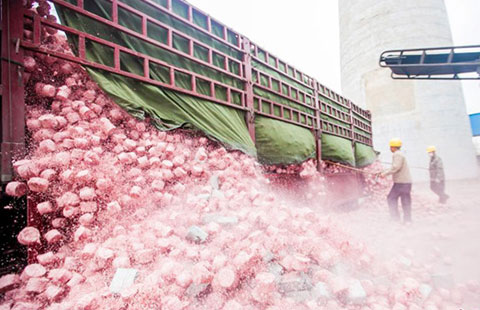Countryside credit reducing rural poverty
By Chen Jia (China Daily) Updated: 2015-11-25 07:53
|
|
Reductions in interest rates, coupled with lower reserve requirements for local commercial banks, are helping to create more jobs and provide higher incomes for residents of disadvantaged areas. Chen Jia reports from Huayuan, Hunan province, and Lankao, Henan province.
Despite a new, if slightly bumpy, mountain road and countless tunnels, it still takes more than six hours to drive to Shiba Dong, a village in western Hunan province, from Changsha, the provincial capital.
Surrounded by the Wuling Mountains, and at an average elevation of more than 1,000 meters, the village, which is home to members of the Miao ethnic group, has just 54.5 hectares of cultivatable land. The rest is barren - and that's a major problem in an area where there are few ways of making a living beyond working the land.
Last year, Shiba Dong's 938 registered residents each earned an average 1,680 yuan ($263), far below the official national poverty line of 2,300 yuan.
The lack of opportunities forced about one-third of the labor force to move to the cities in search of work, leaving the remainder, mostly elderly people and children, in the village.
"We were inured to living in poverty until last year, when the government showed us a new way to raise our incomes. The solution was completely unexpected," said Long Xiulin, head of the poverty-alleviation working group in the village.
The "new way" arrived in August, when the government supported the founding of Miao Hanzi Fruit Co, a joint-stock operation that cultivates kiwi fruits in fields about 30 km from the village. All the villagers own shares in the company.
The venture was prompted by the area's geography, altitude and average mean temperature, which make the region more suitable for the cultivation of kiwi fruits than grain. The only drawbacks were the need for a large area of flat land and a lack of capital.
The land problem was solved when the company rented 75 hectares from another village and contracted it out to the farmers. To provide the capital, a number of professional local cooperatives injected more than 3 million yuan to buy 51 percent of the company's shares, while most of the remaining shares - 49 percent, and worth 2.94 mill-ion yuan - were purchased by the villagers, who used special poverty-relief funds that were previously paid to the village authorities.
In addition to its registered capital of almost 6 million yuan, the company approached a commercial bank, which provided a loan of 10 million yuan to fund infrastructure construction, according to Shi Zhigang, Miao Hanzi Fruit's general manager.
When the first fruits are harvested in 2017, the company expects to earn 25 million yuan, including net income of 17 million yuan, which will result in each villager receiving an annual dividend of more than 5,000 yuan.
Innovative measures
"This business model is an innovative poverty-alleviation measure. It provides help for the poor and promotes sustainable earnings," said Luo Ming, the Party chief of Huayuan county, which administers Shiba Dong.
Luo said the financial support offered by the People's Bank of China has played a key role in the successful implementation of the model: "Without the coordinating work of the central bank, the kiwi fruit planters would not have obtained their loans so quickly, or at a lower interest rate and with an extended repayment period."
- Largest coal mine identified in east China
- Three local officials under graft investigation
- 13m unregistered people to be given hukou recognition
- New ship to ferry supplies to S. China Sea
- Some officials took part in terrorism, watchdog says
- China vows to win battle against poverty
- Nation to lift 50m out of rural poverty in five years
- Drone flying will face stricter monitoring
- Traffic back to normal after snow
- Left-behind girls face higher risks








